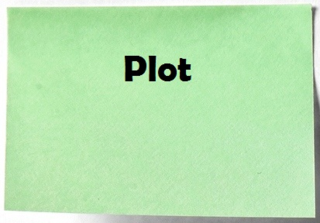Consider using counterplotting in your novel
One solid  plotting strategy for a long novel – though it also will work in a novella or a long short story – is to split the main characters into two groups and alternate the focus of scenes or chapters between them. The two groups then reunite at the story’s climax. This technique is called counterplotting. It’s often is used in quest novels.
plotting strategy for a long novel – though it also will work in a novella or a long short story – is to split the main characters into two groups and alternate the focus of scenes or chapters between them. The two groups then reunite at the story’s climax. This technique is called counterplotting. It’s often is used in quest novels.
Counterplotting is a great way to achieve dramatic tension in a longer story. This can be done by ending each chapter or scene with a cliffhanger, which sets up the narrative hook for the next chapter or scene in which those characters appear. The writer keeps the suspense alive by making the reader wait to see what will happen.
Another advantages to counterplotting is that the writer can more easily build an image of the world through a “narrative collage” or a “kaleidoscopic” journey through it. Seeing the world solely through the eyes of a lone main character can be limiting.
More skilled writers tend to artfully use counterplotting by creating a parallel process between the two groups. For example, to resolve the story’s central problem, each group learns enough that they have a partial solution. When they come together, their partial solutions combined offer the actual answer for overcoming the antagonist.
An offshoot of counterplotting is the multi-stranded plot, when three or more groups form a narrative thread. This is most often used in disaster stories or tales with a large cast of main characters. The movie “Star Trek IV” employed it when Kirk and Spock as one group try to locate whales, Scotty, McCoy and Sulu as one group gathered materials to build a whale tank on their ship, and Uhura and Chekov as a third group try to find a nuclear reactor to re-energize the dilithium crystals.
The danger of counterplotting is the author can leave the reader in suspense for too long between chapters/scenes. In other cases, especially with multi-stranded tales, the plot becomes too complicated for readers to follow and enjoy. Ultimately, too many loose ends can occur at the story’s end, much to readers’ dissatisfaction.
Need an editor? Having your book, business document or academic paper proofread or edited before submitting it can prove invaluable. In an economic climate where you face heavy competition, your writing needs a second eye to give you the edge. I can provide that second eye.
Amazon.com Widgets
Related articles
 When should you start a new novel chapter?
When should you start a new novel chapter? Maintain sense of tension through pace
Maintain sense of tension through pace Basic guidelines for devising cliffhangers
Basic guidelines for devising cliffhangers Develop conflicts related to resolving your story's central problem
Develop conflicts related to resolving your story's central problem Constructing your story's main character
Constructing your story's main character



